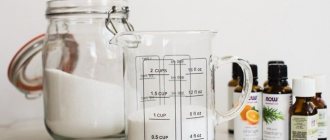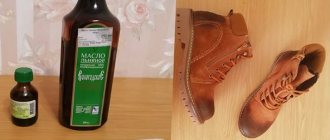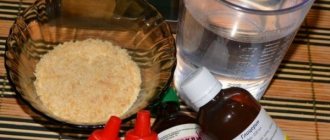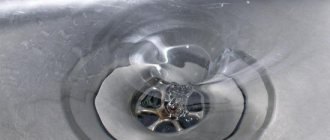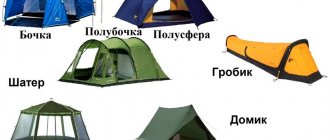Dry ice is solid carbon dioxide that has no taste or aroma. The substance is light in color, does not harm health, and is not flammable. The temperature of solid carbon dioxide is minus 80 degrees.
If the substance is kept at a temperature of +15-20 degrees, then it will turn into smoke or steam. CO2 is made at home by selecting the right ingredients and their ratios. It is used to create special effects, to decorate drinks, and for magic tricks.
To create the substance, baking soda and some other components are useful.
Application of dry ice
Dry ice is considered a universal substance that performs different tasks. Used for industrial purposes: for freezing meat products and fish. They are used to transport goods over long distances and preserve their original appearance.
By placing one piece of special ice in a glass of water, the liquid becomes carbonated. The action can be repeated with juice to obtain lemonade.
The element is used at holidays to cool drinks. CO2 produces smoke at parties. Some people use a non-standard element to repel mosquitoes.
Creating CO2 is an interesting, useful experiment. If desired, it can be carried out at home, having previously read the recipe.
Necessary materials
For the experiment, special materials are prepared, sold in a regular store. There will be no problems with the purchase.
List of materials:
- Acetic acid.
- Pan, glass.
- Cotton cloth or paper napkin.
- Glasses or a mask to protect your eyes.
- Household gloves.
- Baking soda.
The list of components varies depending on the selected recipe. Some people make ice using a fire extinguisher, while others use powdered sodium acetate. The set of elements is specified for each option.
Once the materials are purchased, the CO2 manufacturing process begins. It is important to take precautions for a successful procedure.
Precautionary measures
Solid carbon dioxide requires careful handling. People follow safety precautions when obtaining useful substances. It is necessary to protect your hands and eyes. The element is capable of affecting the skin and mucous membranes, leaving thermal burns. It is allowed to work with it wearing gloves and safety glasses.
Expert opinion
Attention!
If there is a large amount of ice in a closed space, carbon dioxide poisoning can occur. The element must not be transported in a car with the windows closed, nor placed in a sewer or trash bin.
For disposal, the element is converted into a gaseous state. It is left at room temperature or filled with water. For transportation, it is allowed to use a bucket with air access or a container.
Recommended for you:
How to make gel from soap and soda: do it yourself, at home
Safety precautions
Before using a fire extinguisher for your experiments, you should make sure that it is carbon dioxide. There must be a special information marking on its body. The use of other types of fire extinguishers will not achieve the expected results and may be dangerous.
Do not try to get dry ice from gas or air gun cylinders. Opening these objects is extremely dangerous and can lead to unpredictable consequences. When working with a fire extinguisher, it is necessary to use protective glasses and gloves to avoid cold carbon dioxide from contacting mucous membranes.
It is best to purchase a carbon dioxide fire extinguisher from an appropriate store. Then you can be sure that it is completely intact. Dry ice can be obtained from it by periodically refilling it, for example, in a fire department.
Method for making ice from a test tube
This option is suitable for people who want to make solid carbon dioxide at home. You will need a fire extinguisher, glasses, acetic acid, and a plastic bag. You will have to carry out some laboratory experiments strictly according to the instructions.
First you need to extract carbon dioxide: mix sodium bicarbonate and table vinegar. For the convenience of collecting gas, a special glass test tube with a gas outlet tube is used. The tip is placed in water.
In this case, rising bubbles of carbon dioxide will begin to fill another test tube, gradually displacing the liquid. To get a significant amount of gas, they will need to fill a plastic bag.
To create ice, specific conditions must be created. It is important to cool carbon dioxide immediately. The package is mounted on a fire extinguisher or on a cylinder, from which two or three jets are released into the package. This will ensure the necessary cooling. Carbon dioxide from the bag will precipitate in the solid phase.
Molecular gastronomy using carbon dioxide
In molecular cooking, dry ice is an indispensable assistant in preparing the most delicious dishes and desserts. The main advantage: it is easy to get even for a novice cook - it is ordinary carbon dioxide, frozen in a special way.
Dry ice affects the organs of touch and smell, greatly increasing their sensitivity to the taste and aroma of dishes. In restaurants, molecular gastronomy was one of the first to discover and appreciate the unique properties of this substance, chef from England Heston Blumenthal. While serving guests dishes prepared in his molecular kitchen, the maestro poured the aromatic liquid he invented over the ice. Dispersing across the table along with the gas, exquisite aromas enveloped the guests, allowing them to re-evaluate the taste of previously tried dishes.
Using this technology, the already exquisite dish called “Quail Jelly”, lobster soup-puree, truffles and “Duck Liver Dessert” are transformed. Dishes are served to the table with an oak tray into which fragments of dioxide and oak moss are poured. After certain manipulations, a thick aromatic mist begins to flow. The impressions are truly amazing!
Also, dry ice in molecular gastronomy is used for foaming eggs and fermented milk products (yogurt, cocktails), for carbonating alcoholic and non-alcoholic drinks and even vegetables and fruits. This substance allows you to preserve the freshness of truffles and the beneficial properties of green salads. The unique physical characteristics of dioxide open up enormous prospects and opportunities for creative imagination for culinary specialists!
Let us remind you once again that we have a course on unique techniques for decorating dishes. The course includes a significant amount of molecular gastronomy techniques. The course is suitable for professionals and amateurs; you can familiarize yourself with it by clicking on the link now. We also conduct online master classes on molecular gastronomy; announcements can be viewed here.
Instant recipe
- Take a small saucepan and place it on the gas stove.
- Vinegar is poured into the bottom, NaHCO3 is poured onto the bottom, and the resulting mixture is stirred.
- After achieving homogeneity, pour into a glass and place in the refrigerator for further cooling.
The resulting liquid is called sodium acetate. The proportions of soda and vinegar are the same for a successful recipe.
- A frozen mixture of NaHCO3 and acid is taken out of the refrigerator. In this case, the liquid must freeze completely, otherwise it will not be possible to make ice.
- Taking sodium acetate out of the refrigerator, the experiment immediately begins.
- The mixture is placed on the fire and begins to melt.
Recommended for you:
How to get rid of unpleasant foot odor with baking soda at home
The liquid must be poured into another container; the container is covered with a napkin to prevent premature hardening.
The remaining sodium acetate is taken into the hand to proceed to the next stage of the experiment.
- The napkin is removed from the vessel, then the person touches the surface of the liquid with his hand.
- After contact with sodium acetate, an amazing transformation into ice will begin.
Cooking formula with soda, vinegar, salt
To prepare solid carbon dioxide according to this recipe, you will need to prepare the materials in the correct proportions. Components may not be replaced without permission.
Ratio:
- For 25.25 grams of sodium bicarbonate, use 200 ml of 9% vinegar.
- When using 30% essence, 87.4 g of soda is used.
- At a concentration of 70%, 210 grams of NaHCO3 are used.
- To check the correct ratio of the components, heating is carried out. After waiting for the reaction, a small amount of acid is added. When gas is released with a hissing sound, more acid must be added. Pour gently until the mixture subsides.
- Excess water from the solution is evaporated on the stove. The action is carefully controlled; when the crust forms, the heating stops. The composition is infused for 5 minutes.
- When the crust expands and the solution is tightened with ice, a few drops of boiling water are poured in.
- The mixture is stirred, lumps and ice are removed.
- The resulting thick mass is placed in a glass jar and placed in the refrigerator.
- Cools to a temperature of +15-20 degrees.
- If the instructions are followed correctly, a pinch of table salt is added, which activates crystallization. This produces dry ice.
Expert opinion
Advice!
When crystallization does not occur or is weak, the problem is a lack of acetate. There must be more of it in order for solid carbon dioxide to form. As an alternative, it is recommended to use commercial sodium acetate, available in powder form. The recipe will differ from the instructions described above.
- The crystals are poured into water - take 5 small spoons for 3 of the same spoons of liquid.
- The microwave is set for 10 seconds, if necessary, time is added until the solution becomes clear.
- The grains remaining on the walls of the dish are carefully removed.
- The mixture is placed in the refrigerator until it cools.
- An acetate granule is added to initiate crystallization.
Recommended for you:
How to clean silver with baking soda at home
Bibliography
- Duane, H. D. Roller; Tilorier, M. (1952). "Tiliorier and the first solidification of a 'permanent' gas (1835)". Isis
.
43
(2): 109–113. Doi:10.1086/349402. JSTOR 227174. - Goroll, Allan H.; Malley, Albert G (2009). Primary Medicine: Office Assessment and Management of the Adult Patient
. Lippincott Williams and Wilkins. ISBN 978-0-7817-7513-7 .CS1 maint: ref=harv (communication) - Hering, Heinz-Wolfgang (2008). Processing of industrial gases
. Christine Ahner. Wiley-VCH. ISBN 978-3-527-31685-4. Retrieved 2009-07-31. - Housecroft, Catherine; Sharp, Alan J. (2001). Inorganic chemistry
. Harlow: Prentice Hall. item 410. ISBN 978-0-582-31080-3. Retrieved 2009-07-31. - Keyes, Conrad J. (2006). Recommendations for Cloud Seeding to Increase Precipitation
. American Society of Civil Engineers. ASCE Publications. ISBN 978-0-7844-0819-3.CS1 maint: ref=harv (communication) - Verma, N.K.; Khanna, S.K.; Kapila, B. (2008). Integrated Chemistry for Class XI
. New Delhi: Lakshmi Publications. ISBN 978-81-7008-596-6. Retrieved 2009-07-31.CS1 maint: ref=harv (communication) - McCarthy, Robert E. (1992). Secrets of Hollywood Special Effects
. Boston: Focal Press. ISBN 978-0-240-80108-7 .CS1 maint: ref=harv (communication) - Mithra, Somenath (April 2004). Methods of sample preparation in analytical chemistry
. Wiley-IEEE. ISBN 978-0-471-32845-2. Retrieved 2009-07-31. - Treloar, Roy D. (2003). Encyclopedia of Plumbing
(3rd ed.). Wiley-Blackwell. paragraph 175. ISBN 978-1-4051-0613-9. Retrieved 2009-07-31.CS1 maint: ref=harv (communication) - Yaws, Carl (2001). Matheson Gas Data Book
(7th ed.). McGraw-Hill Professional. ISBN 978-0-07-135854-5. 982 pages. Retrieved 2009-07-27.CS1 maint: ref=harv (communication)
